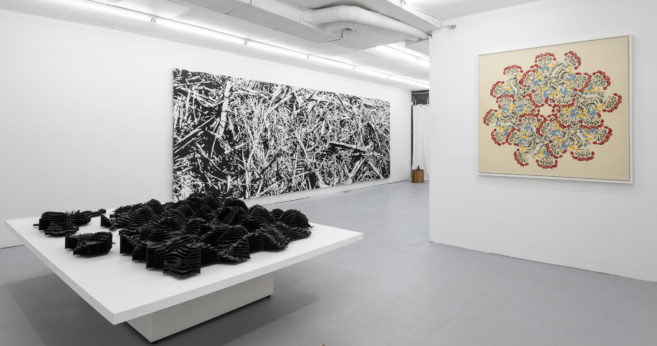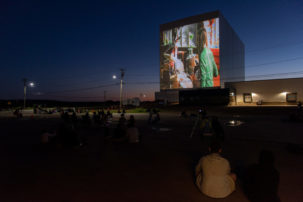Leanne Olson’s exhibition “With All Things Considered” at the Mitchell Art Gallery casts the detritus of everyday life not as something we have disposed of, but as something that remains. It features work Olson made in 2018 and 2019 related to her experience as the first artist in residence at the Edmonton Waste Management Centre. Accordingly, its photographic prints and installations conjure time, disaster and the things we (think we) leave behind.
Olson’s past work often borders on abstraction, and two of the prints here, Blue Lagoon and Garbage Pitas, with garbage and blue bags filling their frames, do as well.
Three other prints depict parts of the landscape as shaped by generations of garbage. Details of soil in Embrace and a lone Canada goose in Coworker serve as reminders of the work we ask nature to do when we put garbage in the ground. Human animals are never directly depicted. Instead we see bits of clothing, packaging from consumed (and unconsumed) products, remnants of furniture—in short, material echoes and concrete ghosts.
One installation, Dream Life, comprises 12 images of garbage bales. Printed on vinyl and adhered to walls in a corner of the gallery, it envelops us like the aisles of a grocery store. It also offers Olson’s most explicit critique of capitalist consumption: rows of branded garbage are flattened and drained of their (unfulfilled) packaging promises. We’re left to look at the remains of unneeded items, things that we might have purchased unthinkingly, like the add-ons that granted us free shipping.
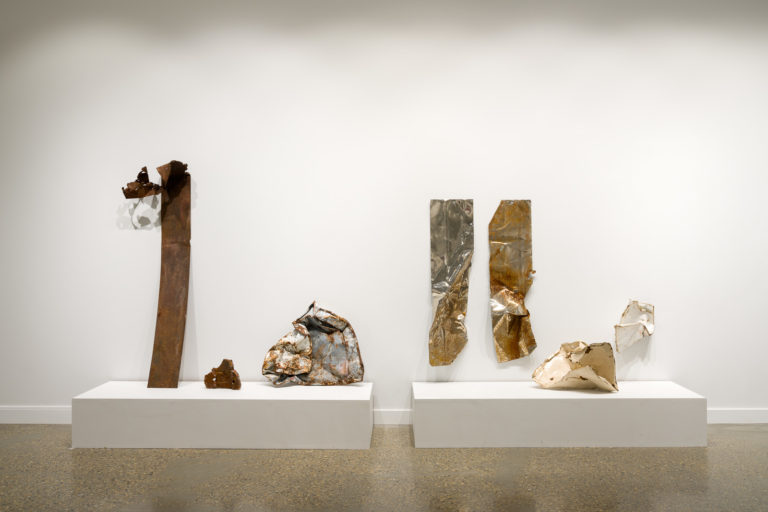 Leanne Olson, Collection of Bruised Metals, 2019. Found scraps. Photo: Blaine Campbell.
Leanne Olson, Collection of Bruised Metals, 2019. Found scraps. Photo: Blaine Campbell.
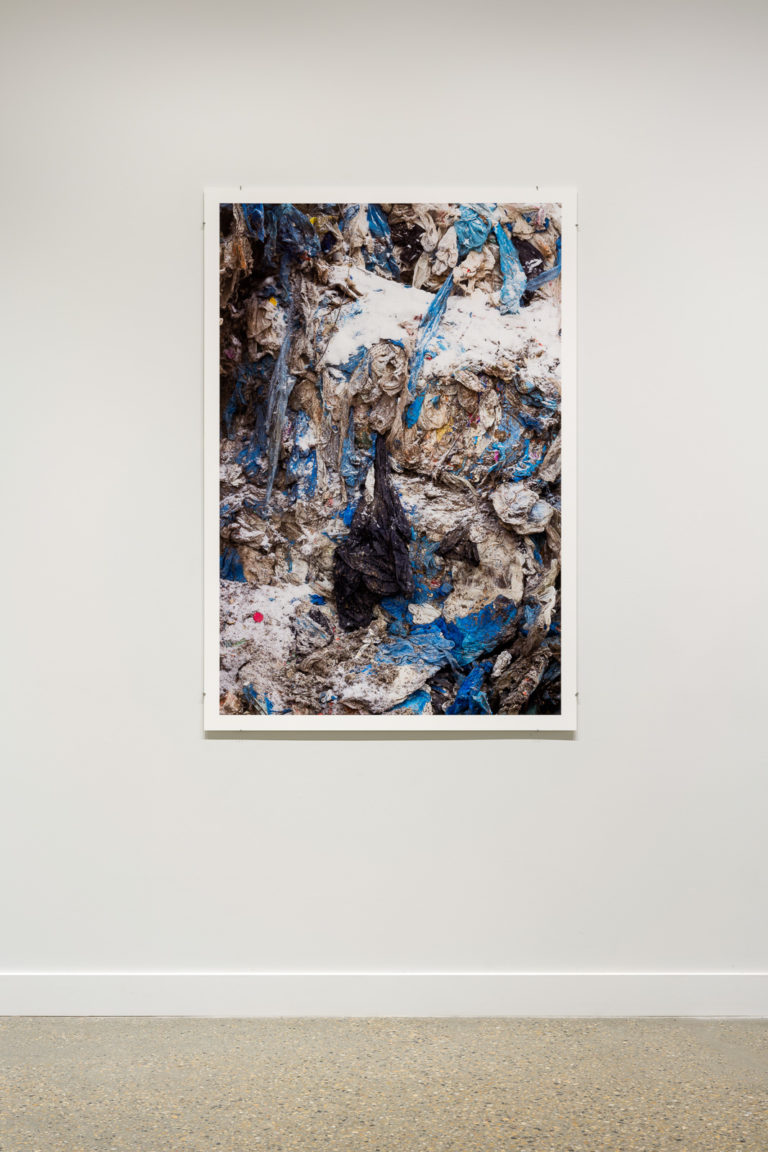 Leanne Olson, Blue Lagoon, 2019. Digital photograph on cotton rag paper and board. Photo: Blaine Campbell.
Leanne Olson, Blue Lagoon, 2019. Digital photograph on cotton rag paper and board. Photo: Blaine Campbell.
Particularly intriguing is that in Dream Life, branches and part of a furry animal are visible behind layers of cardboard and newspaper. It feels like a portal into another world. If I were just small enough, I thought, I could climb through. Then I realized that this “nature” is actually what looks like a crumpled magazine cover, or maybe a camping-gear box.
Despite contemporary details, the show feels museum-like, drawing my attention to a broader history of memorializing disaster through documents, artifacts and remains. In the gallery, my mind wandered to names of catastrophes, such as Chernobyl, that persist in my consciousness through videos and photographs. Such documentation honours what was lost and focuses collective memory on a historical event, while at the same time reminding viewers that we are powerless to stop the tragedy that has already occurred.
In this light, “With All Things Considered” is a sort of cenotaph for the present. Olson focuses our attention on a disaster happening now, and on the need for more than remembrance. Her titles look to the present and the future rather than the past. Dream Life is aspirational, Garbage Pitas references nourishment and #yegbrick nods to this double-tappable instant.
After spending a year at the Edmonton landfill, Olson could have created work that was condescending and urgent. But she didn’t do that. The work here is quiet. It empathizes with viewer and subject, faulting a system rather than the people in it.
Nowhere is this empathy more apparent than in Ode to the Tip Crew, the only video in the show, which loops on a screen just outside the gallery. The 90-minute piece offers a glimpse of life on the sorting floor. It conveys respect and affection for the people Olson worked beside during her residency—people who devote their time and energy to caring for the things most of us no longer care much about.
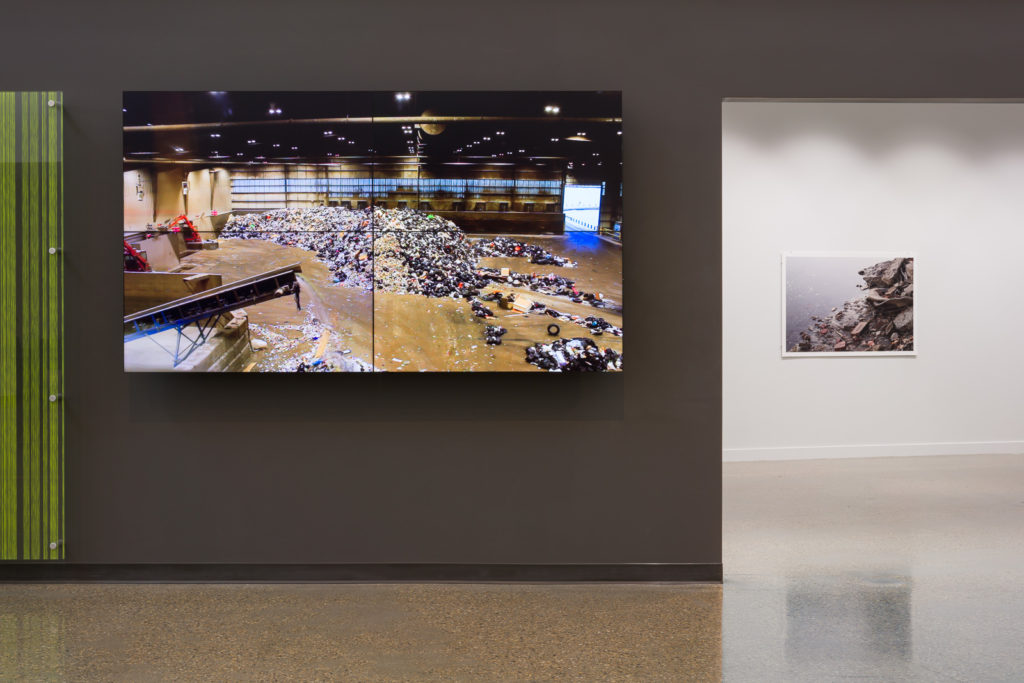 Left: Leanne Olson, Ode to the Tip Crew, 2019. Digital video, 90 min. Right: Leanne Olson, #yegbrick, 2018. Digital photograph on cotton rag paper and board. Photo: Blaine Campbell.
Left: Leanne Olson, Ode to the Tip Crew, 2019. Digital video, 90 min. Right: Leanne Olson, #yegbrick, 2018. Digital photograph on cotton rag paper and board. Photo: Blaine Campbell.

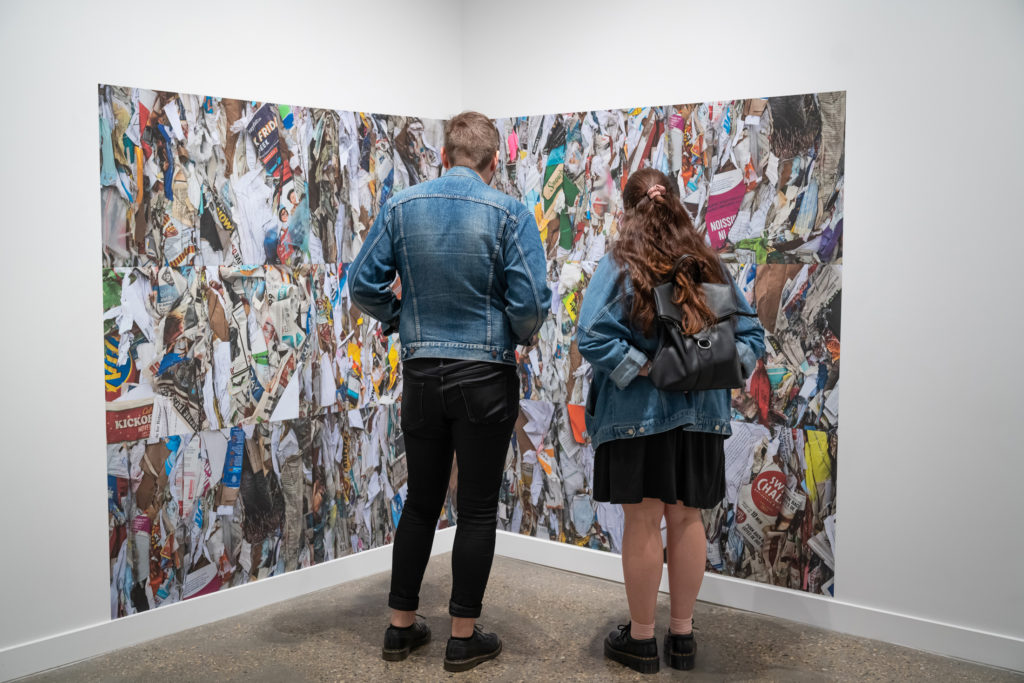 Visitors look at Leanne Olson’s photo-installation Dream Life (2018) during an opening reception at the Mitchell Art Gallery. Photo: Mitchell Art Gallery.
Visitors look at Leanne Olson’s photo-installation Dream Life (2018) during an opening reception at the Mitchell Art Gallery. Photo: Mitchell Art Gallery.
